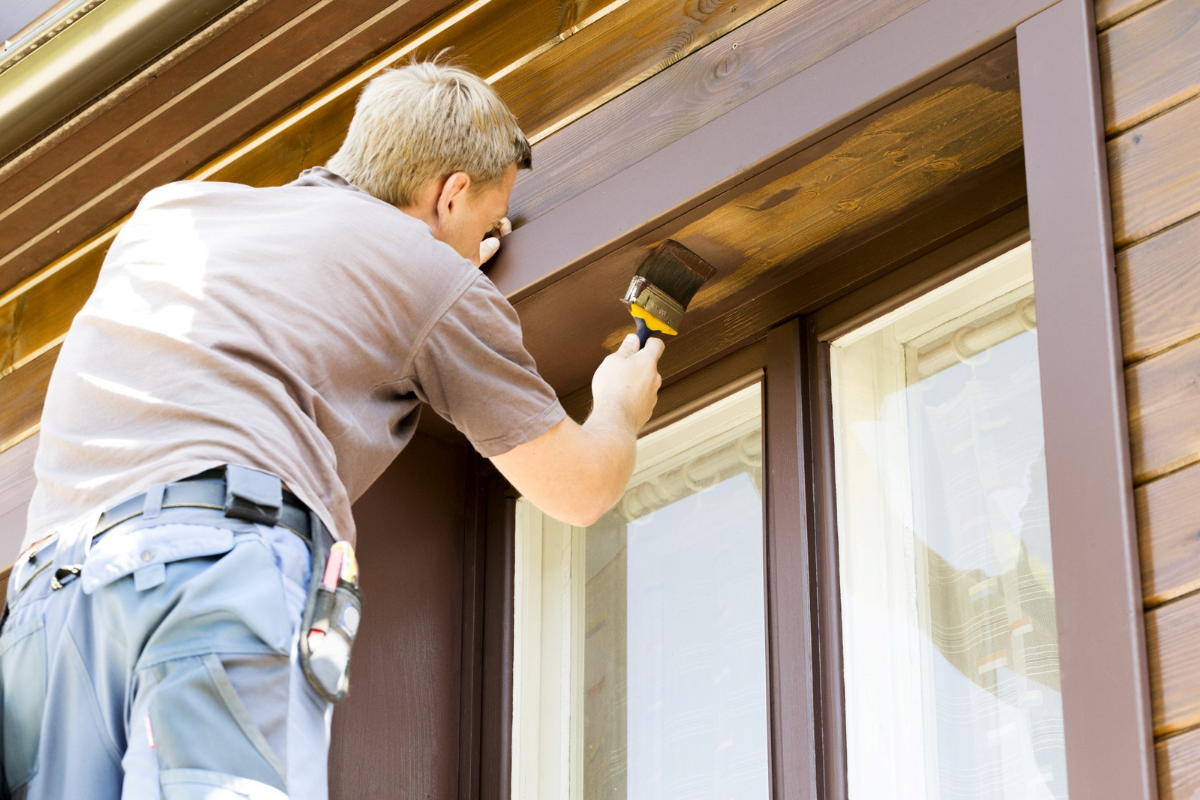When it comes to exterior home painting, the importance of selecting the right weather conditions cannot be overstated. Painting the outside of a home requires careful planning, not just in terms of color and materials but also in terms of timing. Weather plays a crucial role in determining the success and longevity of the paint job. Poor weather conditions can lead to peeling, cracking, or uneven surfaces. Therefore, selecting ideal weather conditions can make all the difference.
Why Weather Matters for Exterior Painting
The weather directly affects the drying time and the adhesion of paint to exterior surfaces. If the paint doesn’t adhere properly or dries too quickly or slowly, the overall finish will suffer. Extremes in temperature and humidity, as well as rain or wind, can sabotage a well-intended paint job. For this reason, understanding the best weather conditions is essential for a durable and high-quality finish.
Temperature: Finding the Sweet Spot
Temperature is one of the most important factors in ensuring a successful paint job. Ideal temperatures for
exterior home painting typically range between 50°F and 85°F. Both extremes, too hot or too cold, can negatively impact the process.
Too Hot (Above 90°F): Excessive heat can cause the paint to dry too fast, leading to blistering or uneven coverage. When the paint dries before it has a chance to properly settle, it might also lead to poor adhesion and, eventually, cracking.
Too Cold (Below 50°F): Cold weather can hinder the drying process, leading to clumping and bubbling in the paint. It also impacts the paint’s ability to bond to the surface, resulting in peeling or chipping later on.
Humidity Levels: Striking the Right Balance
Humidity is another key factor. When the air is too humid, it can cause moisture to get trapped under the paint, leading to blistering and peeling. On the other hand, extremely dry conditions can make the paint dry too quickly.
Ideal Humidity Range: The best humidity for exterior painting is between 40% and 70%. These levels ensure that the paint dries at a moderate pace, allowing for proper curing while avoiding moisture entrapment.
High Humidity (Above 80%): Excess humidity leads to longer drying times, and this delay can result in uneven finishes or even paint failure.
Low Humidity (Below 30%): In contrast, very low humidity can cause the paint to dry almost immediately after application, which compromises its durability and can lead to a chalky finish.
Wind: Avoid High Wind Conditions
While it may seem irrelevant, wind plays a significant role in exterior painting. High winds can carry dust, dirt, and debris, which can stick to freshly applied paint, ruining its finish. Additionally, wind can cause the paint to dry too quickly, leading to cracks and poor adherence.
Mild Wind (Below 10 mph): Mild winds are ideal as they help ventilate the area and aid in the even drying of the paint. Just be sure the winds aren’t strong enough to blow debris onto the freshly painted surface.
Rain: A Clear Sky Is a Must
It’s obvious, but important to mention—rain and fresh paint don’t mix. Rain can wash away fresh paint and lead to unsightly streaks. Therefore, it’s essential to monitor the weather and ensure that there’s no rain in the forecast for at least 24 to 48 hours after applying the paint.
Post-Rain Conditions: Even after the rain stops, the exterior surfaces need time to dry out.
Painting on damp wood, brick, or concrete can result in moisture being trapped, which can lead to peeling and blistering after the paint cures.
Sunlight: Direct vs. Indirect Sun
Direct sunlight can cause the surface to heat up quickly, which will speed up the drying time and potentially compromise the paint’s finish. It’s generally better to paint in shaded areas or during times of the day when the sun is not at its peak.
Overcast Days: A day with cloud cover but no rain is often ideal for exterior painting. It allows the paint to dry at a moderate pace without being exposed to intense heat or direct sunlight.
Best Season for Exterior Home Painting
Seasonal weather patterns significantly impact when exterior painting should be done. Choosing the right season can make the process easier and ensure a better result.
Spring and Fall: The Optimal Seasons
In most regions, spring and fall are considered the best times for exterior painting. During these seasons, the weather tends to be mild, with temperatures and humidity levels that are perfect for painting.
Spring: With moderate temperatures and manageable humidity, spring is ideal for exterior painting. However, make sure the rainy season has passed before beginning.
Fall: Like spring, fall offers consistent weather with cool, dry air, especially in regions where summers are excessively hot. Fall also presents fewer weather extremes, allowing for optimal painting conditions.
Summer: A Cautious Approach
In regions with mild summers, this season can also be ideal for painting. However, in areas where temperatures consistently exceed 90°F, it’s essential to be cautious. Painting in extreme heat can compromise the quality of the finish, as mentioned earlier.
Winter: Proceed with Caution
Winter is typically not recommended for exterior painting unless you’re in a region with mild winters. Freezing temperatures and snow can damage fresh paint. However, in southern or coastal regions, where temperatures remain mild even in winter, it can be possible to complete an exterior painting project.
Tips for Painting in Variable Conditions
Weather conditions can sometimes be unpredictable. Here are some tips to ensure a successful paint job, even when the weather isn’t perfect:
Check the forecast: Always consult a reliable weather forecast before starting your painting project. Look for at least three consecutive days of ideal weather conditions, including temperature, humidity, and the absence of rain.
Work in shaded areas: If direct sunlight is unavoidable, try to paint in the early morning or late afternoon, when the sun is less intense. Alternatively, use tarps or canopies to create shade over the painting area.
Prep the surface well: Ensure that surfaces are clean, dry, and free of debris before starting. Proper surface preparation is essential, regardless of weather conditions.
Use weather-appropriate paint: Consider using weather-resistant paint specially formulated for exterior surfaces. These paints are designed to withstand various environmental conditions, including moisture and temperature changes.
Conclusion
Choosing the right weather conditions for exterior home painting is crucial for ensuring a high-quality and long-lasting finish. By selecting the right temperature,
humidity, and avoiding problematic weather like rain and wind, you can ensure that your exterior paint job will not only look great but will also stand the test of time.




